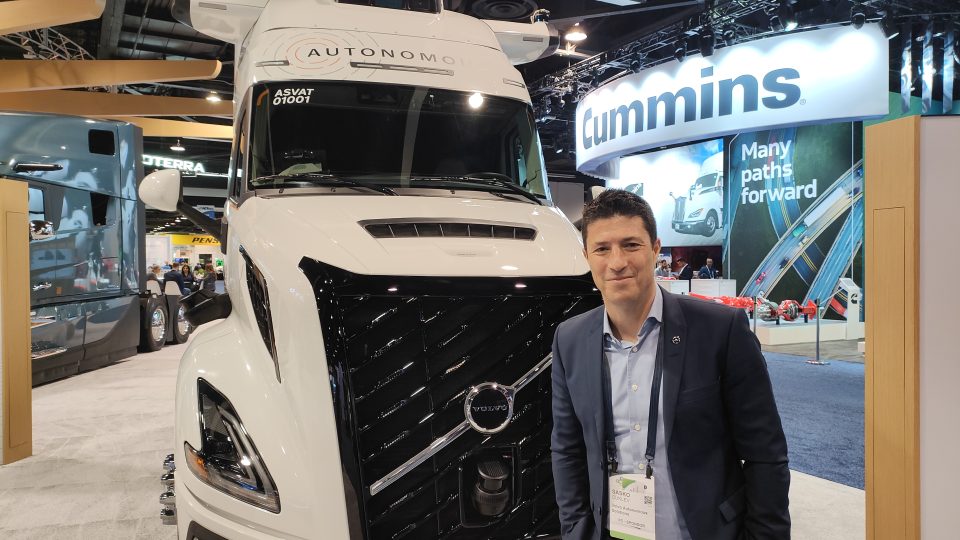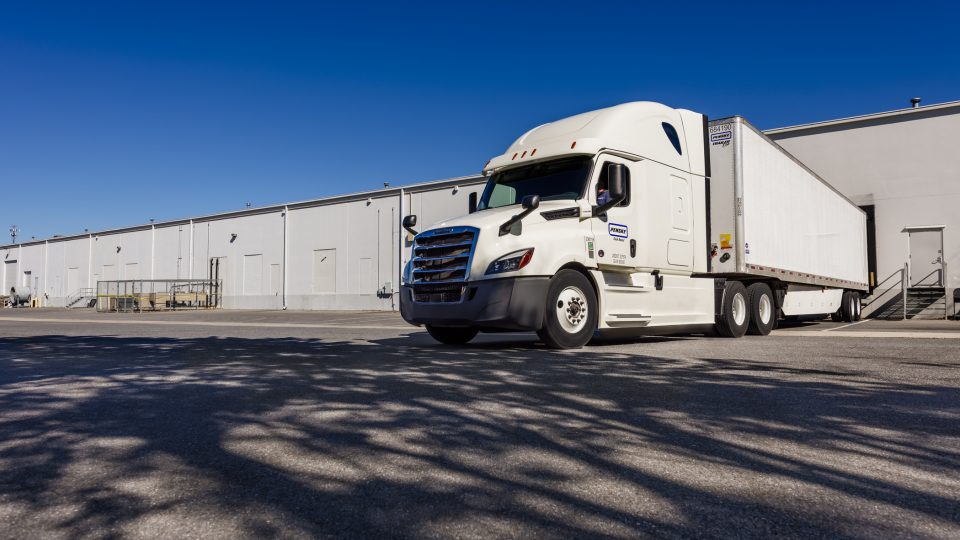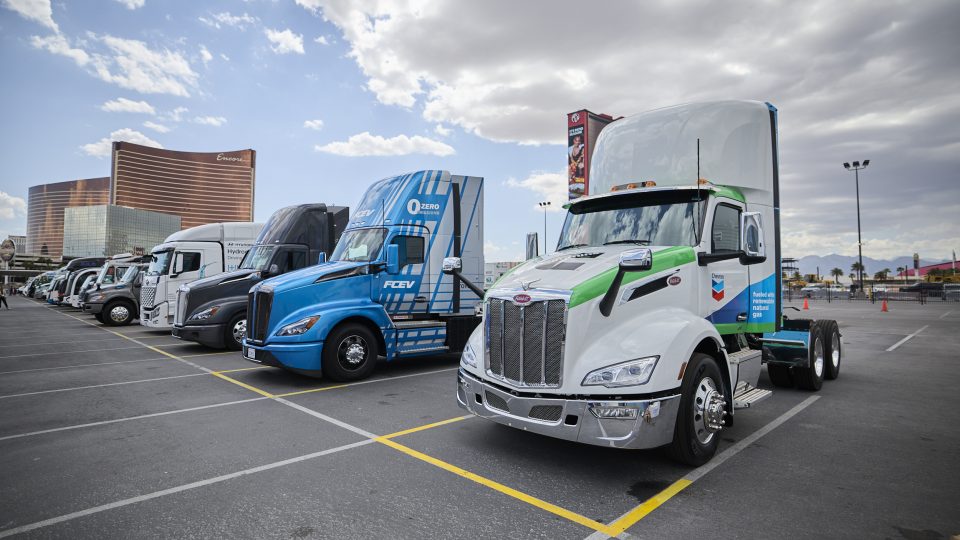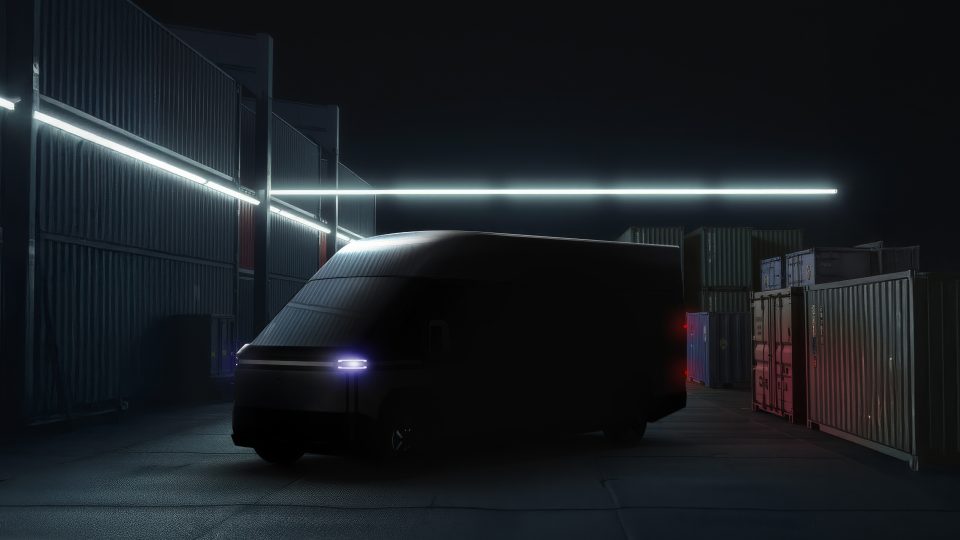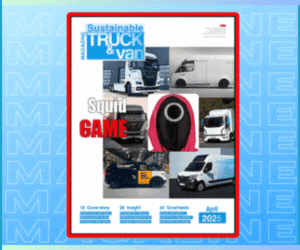Fuel cell makers for more than 40 years, Ballard is at the forefront of the truck revolution. Interview with Nicolas Pocard
The close collaboration with Quantron on the development of their QHM FCEV truck, the latest product released by Ballard, the company's investments in R&D and production capacity, the role of fuel cells in the future of heavy-duty mobility. VP Marketing & Strategic Partnerships, Nicolas Pocard, shared his own ideas on all these topics.
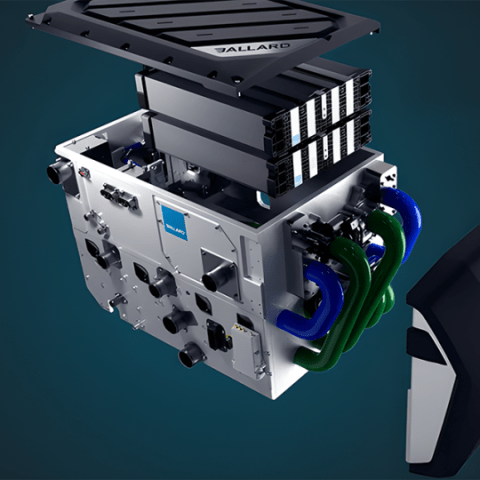
Canada-based company Ballard has been making fuel cell systems for more than 40 years, gaining experience mainly on buses and trains. Now, even the truck sector is getting increasingly familiar with the idea of having fuel cells on vehicles, with several new projects and tests being carried out. Also, a few trucks equipped with fuel cells can be currently ordered, including the new Quantron’s QHM FCEV hydrogen truck introduced at IAA. Quite an interesting project, relying on the close cooperation with Ballard, which provides not only the fuel cells. We talked about this (and much more) with Nicolas Pocard, VP Marketing & Strategic Partnerships at Ballard.
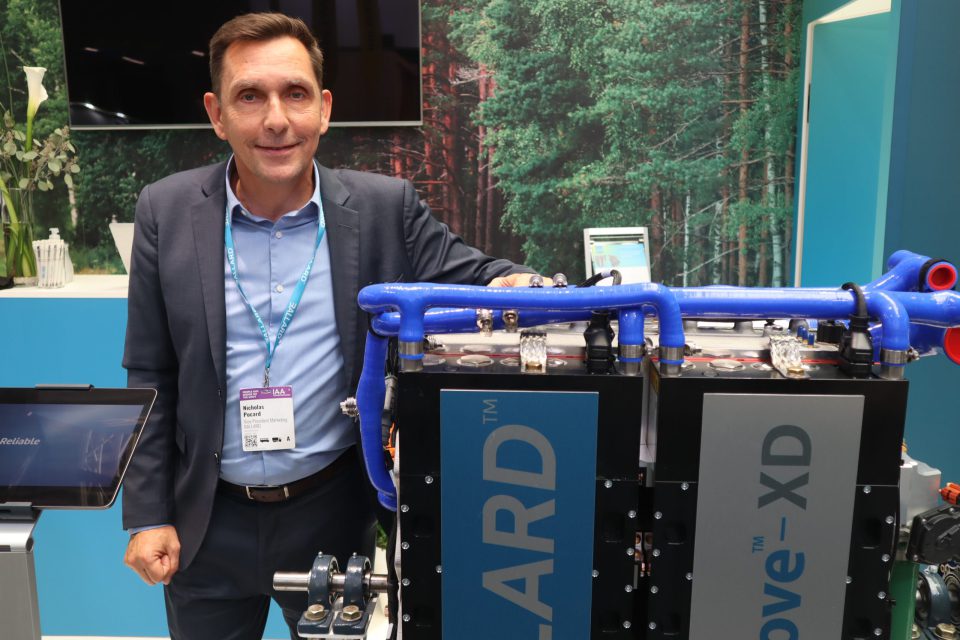
Ballard, more than fuel cell production. Nicolas Pocard speaking
Let’s start talking about the collaboration between Quantron and Ballard, as we know Ballard also invested in the Quantron project. How about that?
“Quantron has a vision. They want to move fast; they want to deploy fuel cell electric trucks on the road now. They have a great engineering team, with people coming from some of the major automotive players in Germany. I have to say we were surprised by the quality they were able to put in the trucks. It’s definitely a great partnership.
Then, you’re right, Ballard has invested in Quantron, as we needed someone capable to really accelerate the adoption of fuel cell trucks and we wanted to help our partner develop a new vehicle project. Designing a truck costs a lot of money, we know it and we wanted to contribute. By investing in Quantron, we used our capital to help them face the development costs. This is not the one and only investment Ballard has done into next-generation players to accelerate the fuel cell truck program. I’m sure next year we’ll see the very first fuel cell Quantron trucks in the hands of customers“.
We have been making fuel cells work, we have been proving that fuel cells last and fit into vehicles: buses, trucks, trains. The challenge now is to prove that fuel cells deliver TCO, so they are cost effective when compared to a diesel engine
Nicolas Pocard, VP Marketing & Strategic Partnerships at Ballard
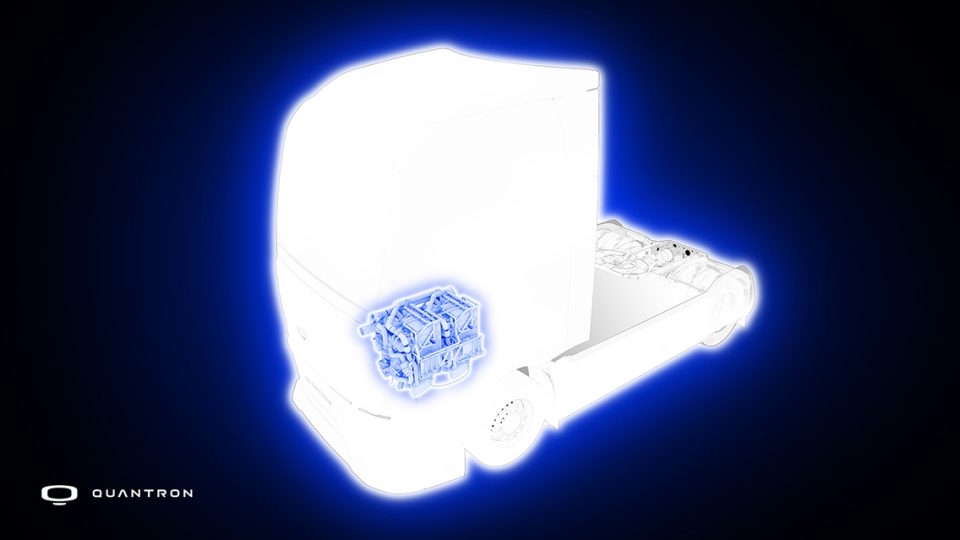
How important was the experience Ballard gained in the bus sector to approach the truck one?
“Very important. A bus is a very tough vehicle, as it operates for several hours in the day with a stop-and-go mode. We have buses operating in Europe and North America in different environments. We know the challenges of heavy-duty mobility, also in terms of duty cycle, and this is very useful when it comes to working with truck manufacturers. We’re increasing our range of products to meet the requirements of heavy-duty trucks. Our current production capacity is about 1.6 GW to make fuel cell stacks. In our portfolio, we have smaller stack (50 kW), as well as some products with 120-150 kW power output. We can also provide roof top fuel cell modules to be mounted on buses, or even 12 to 19-ton distribution trucks”.
Ballard has gained experience with fuel cells in the last 40 years. Where are we now, along this pathway?
“Yes, we’ve been making fuel cells work, we have been proving that fuel cells last and fit into vehicles: buses, trucks, trains. The challenge now is to prove that fuel cells deliver TCO, so they are cost effective when compared to a diesel engine”.
The products on display at IAA Transportation
Ballard took part in IAA Transportation, back in September, this year. Which products were on display in Hannover?
“We had our latest generation fuel cell engine for heavy-duty trucks. The FCmove-XD 120 kW has been conceived to be installed under the hood of 19- up to 44-ton trucks. In 44-ton trucks we can integrate two of them, side by side, with an overall power of 240 kW (120 kW each). An example is the brand-new Quantron 44-ton truck introduced at IAA, which features two fuel cell engines”.
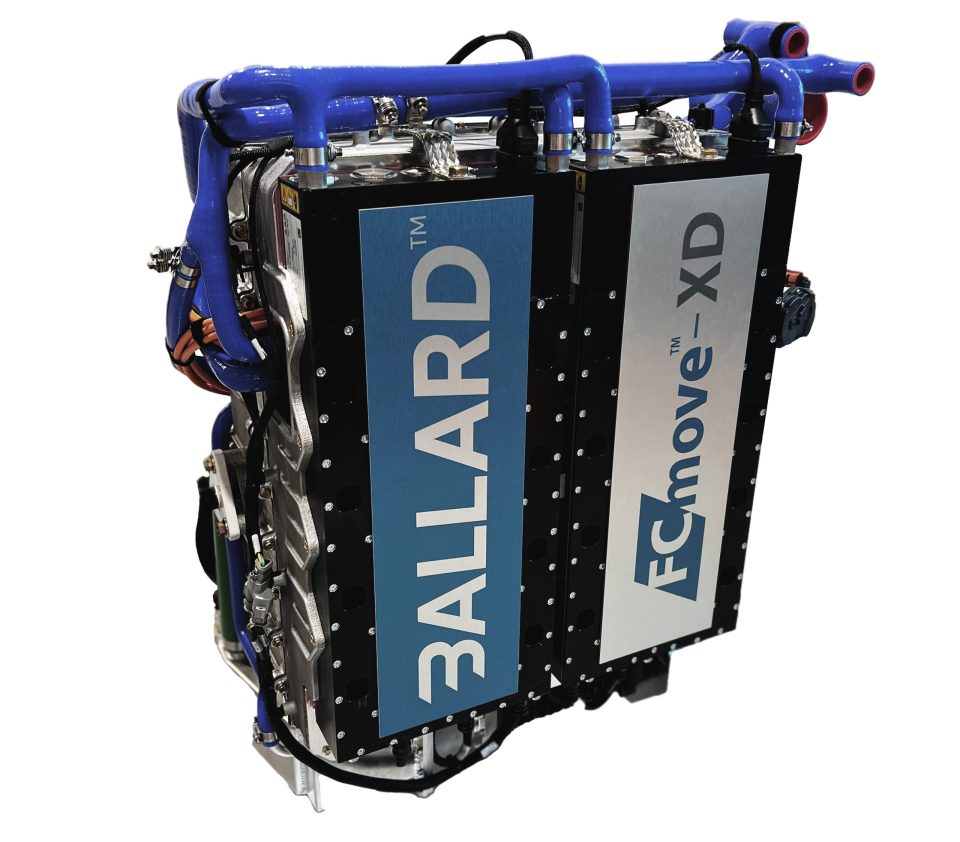
We might say it’s a fully modular system, then.
“Indeed. The core of the technology, the fuel cell stack, is fully made by Ballard. This is where the power is generated: the stacks are made of individual cells with graphite plates. Graphite has the great advantage to avoid corrosion, as fuel cells can suffer corrosion quite a lot. Graphite can also ensure higher durability to the stack, more than 20,000 hours. Ballard makes the plates, and we are also in charge of the membrane electrode assembly, which is at the heart of the fuel cell”.
So, it’s quite different compared to the battery cells, all coming from the Far East so far.
“It is. We buy the raw materials, and we make the cells, so we’re not depending on rare earth materials. We can also recover 95% of the precious metal catalyst and the platinum, so we can refurbish our stacks and recover most of the expensive parts. I’d say that making a fuel cell is more or less like making an engine, but if you look at Euro 6 diesel engine, it is much more complicated. Once we will be able to make them at scale, the cost will drop significantly and it’s not depending on critical commodities that can be compromised by geopolitical issues”.
Our current production capacity is about 1.6 GW to make fuel cell stacks. In our portfolio, we have smaller stack (50 kW), as well as some products with 120-150 kW power output. We can also provide roof top fuel cell modules to be mounted on buses, or even 12 to 19-ton distribution trucks
Nicolas Pocard, VP Marketing & Strategic Partnerships at Ballard
Fuel cells vs hydrogen-powered ICEs: “They can coexist”
At IAA, we’ve seen the first hydrogen-powered ICEs mounted on prototype trucks. Do you think hydrogen ICEs and fuel cells can coexist?
“I think so. Hydrogen ICEs can be useful mainly in a transition phase. Internal combustion is limited in efficiency, while fuel cells have a much higher degree of efficiency. At the end of the day, this is going to make a difference.
Hydrogen is not cheap. Fuel is a big part when you talk about truck operation. To summarize, as long as fuel cells are so expensive, hydrogen ICEs can help fill a gap, but when the price of fuel cells goes down, the picture will change a lot. And then, fuel cells are purely zero emissions, while ICEs are not”.










